RDNA 2 is all about performance, power, and new features
When it comes to architecture improvements, AMD is talking about new high-performance Compute Units, high-speed design, Infinity Cache as well as other advanced features. According to announced details, new Compute Units got pervasive fine-grain clock gating, aggressive pipeline rebalancing, and redesigned data paths for efficient movement.
While we still don't have the full details, it will be interesting to compare the RDNA2 CUs with first-generation RDNA CUs, but according to AMD, we are looking at around 2x the performance and up to 54 percent higher performance per Watt, compared to the previous generation. AMD managed to squeeze out 30 percent higher frequency at the same power, and all at the same 7nm node.

As announced earlier, the AMD RDNA2 architecture was aiming at 50 percent performance per Watt, gained from various segments. To make things even better, those improvements to the architecture as well as other enhancements allowed AMD to even hit up to 54 percent performance per Watt improvements over the first generation RDNA architecture.

The AMD Infinity Cache appears to be a real gamechanger for AMD, with Infinity Cache and 256-bit GDDR6 providing up to 2.17x higher bandwidth at 0.9x the power, and that is when compared to a traditional 384-bit GDDR6 design.

The AMD Smart Access Memory is yet another feature that comes when the RX 6000 series is paired up with AMD Ryzen RX 5000 series CPUs, and with AMD Rage Mode, offering anywhere from 2 to 8 percent improvement in games.
There is also a set of new features that come with RDNA2 architecture, including full DirectX 12 Ultimate support with DirectX Raytracing, Variable Rate Shading, Mesh Shaders, and Sampler Feedback, as well as upcoming support for DirectStorage API.
AMD Radeon RX 6000 start with RX 6800XT and RX 6800
As announced by Scott Herkelman, VP & GM of AMD's Radeon Business Unit, the first SKUs in the Radeon RX 6000 series are the Radeon RX 6800XT and the Radeon RX 6800. The RX 6800XT gets 72 Compute Units (CUs), 16GB of GDDR6 memory on a 256-bit memory interface, 128MB of Infinity Cache, and works at 2015MHz Game and 2250MHz Boost clocks, all at 300W TBP.
Performance-wise, and according to AMD's own slides, the RX 6800XT should put a decent fight against Nvidia's RTX 3080, trading blows and staying close above or below, depending on the game. When in AMD Rage Mode, and with AMD Smart Access Memory enabled, allows it to outperform the Nvidia RTX 3080.


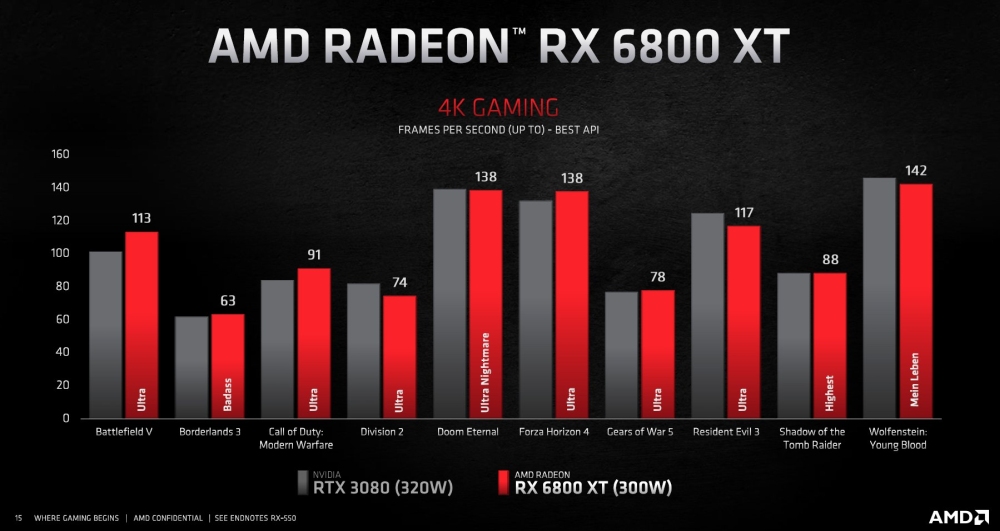

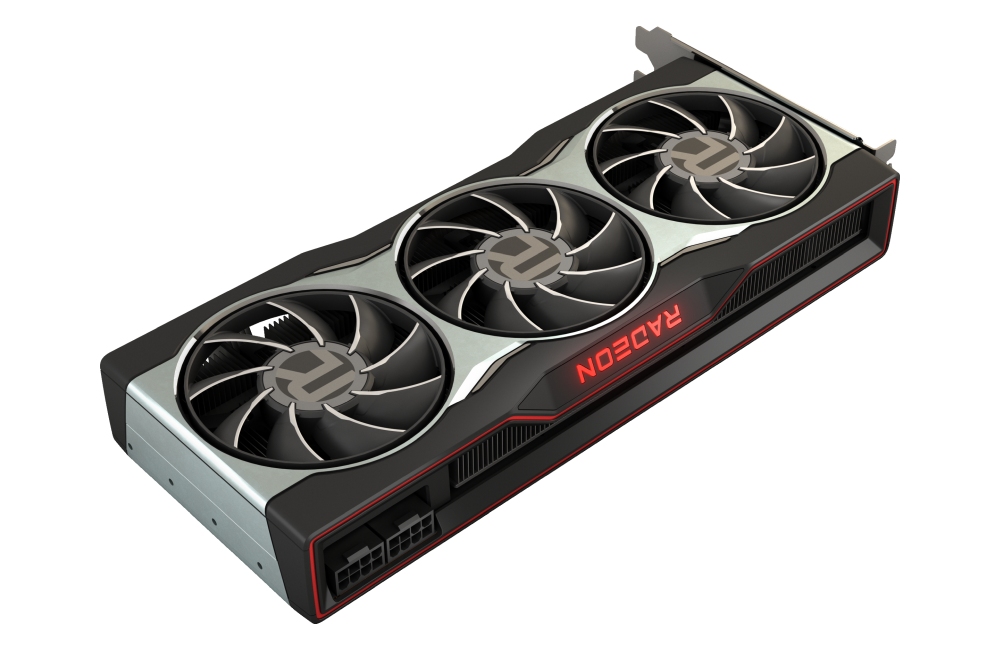

The second card in the Radeon RX 6000 series is the Radeon RX 6800, a 250W TBP (total board power) card with 60 Compute Units, same 16GB of GDDR6 memory on a 256-bit memory interface, 128MB of Infinity Cache, and slightly lower 1815MHz Game and 2105MHz Boost GPU clocks.
AMD has used Nvidia RTX 2080 Ti, which also means it should go directly against RTX 3070, offering slightly higher FPS in most games, especially with AMD Smart Access Memory.

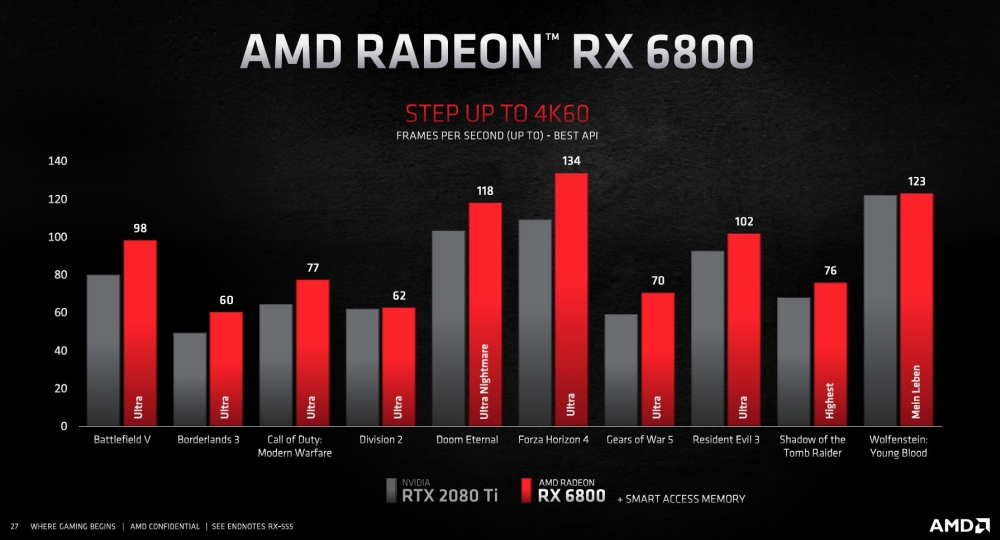

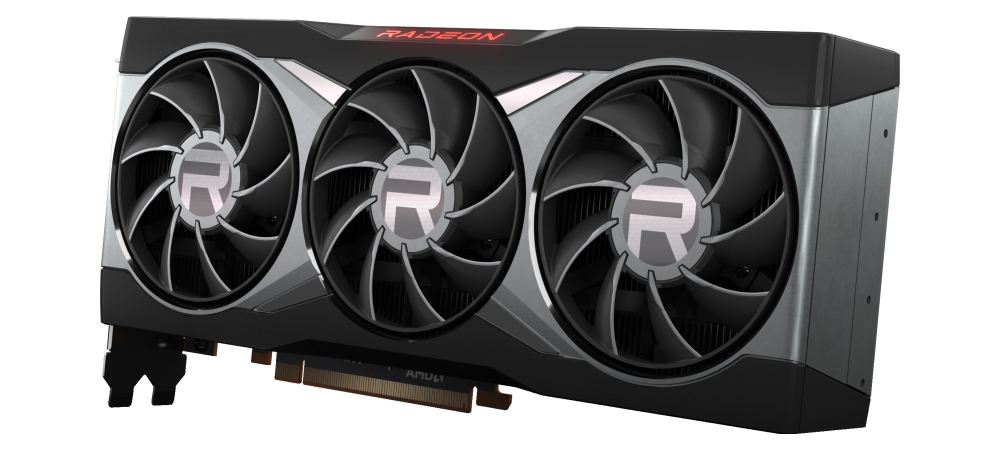

The flagship RX 6900XT gets 80 CUs at 300W TBP
To make things even more interesting, AMD's CEO, Dr. Lisa Su, came back to the stage with yet another announcement, the flagship Radeon RX 6900XT, which should, according to AMD, go head to head with the Nvidia RTX 3090 behemoth.

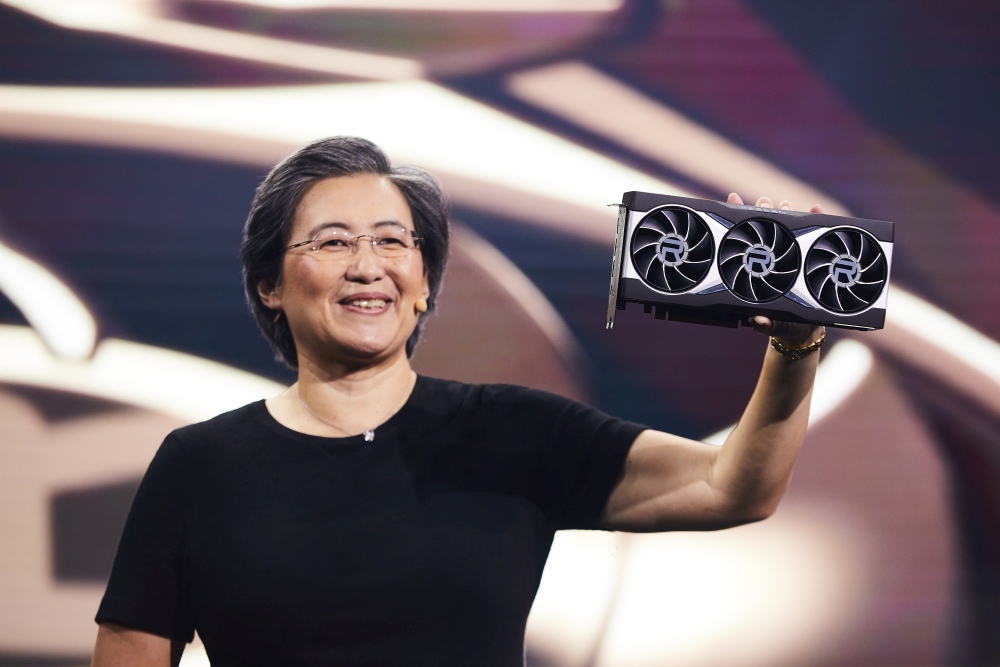
It features 80 Compute Units, the same memory configuration with 16GB of GDDR6 memory on a 256-bit memory interface, 128MB of Infinity Cache, and 2015MHz Game and 2250MHz Boost GPU clocks, all at the same 300W TBP. AMD says that the RX 6900XT brings 65 percent higher performance per Watt compared to the RDNA architecture, and should outperform the RTX 3090 in a lot of titles, with Rage Mode and Smart Access Memory enabled, of course.



Radeon RX 6800 series in November and RX 6900XT comes in December
According to AMD, the first SKUs, the Radeon RX 6800 and the RX 6800XT should be coming to retail/e-tail shelves on November 18th, priced at $579 and $649 (SEP), respectively. The Radeon RX 6900XT comes on the 8th of December, with a price set at $999 (SEP).
AMD has managed to outprice and outperform Nvidia, especially with the RAGE mode and Smart Access Memory features, and, hopefully, reviews will show similar performance gains. We still would love to see more details regarding these new features, and more details is bound to find its way online in the coming days.
In any case, the ball is now in Nvidia's court, and it will be interesting to see whether we see the fabled price-wars or any other adjustments and new SKUs from Nvidia in the future, but the GPU market is finally getting some competition across all market segments.




